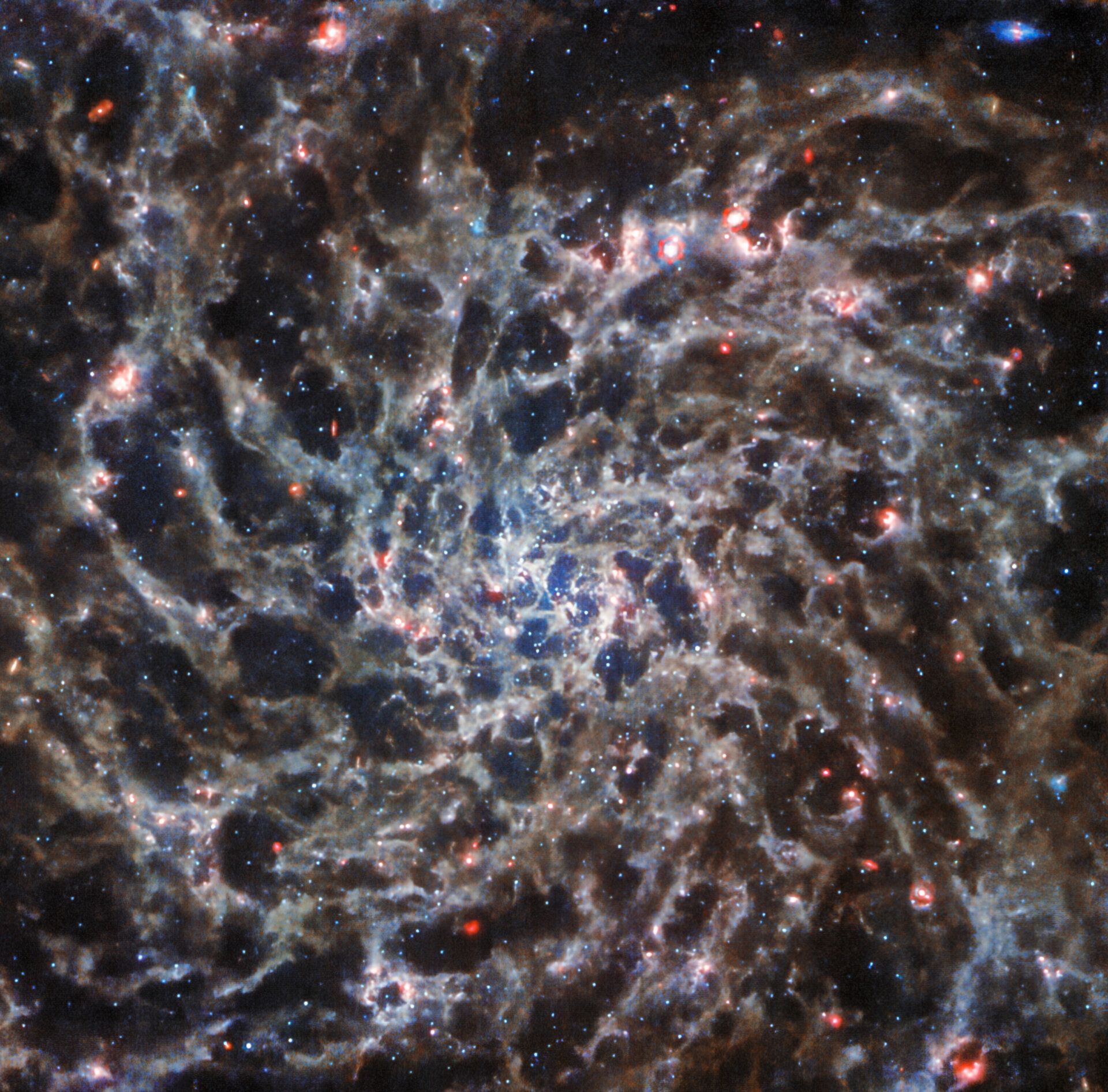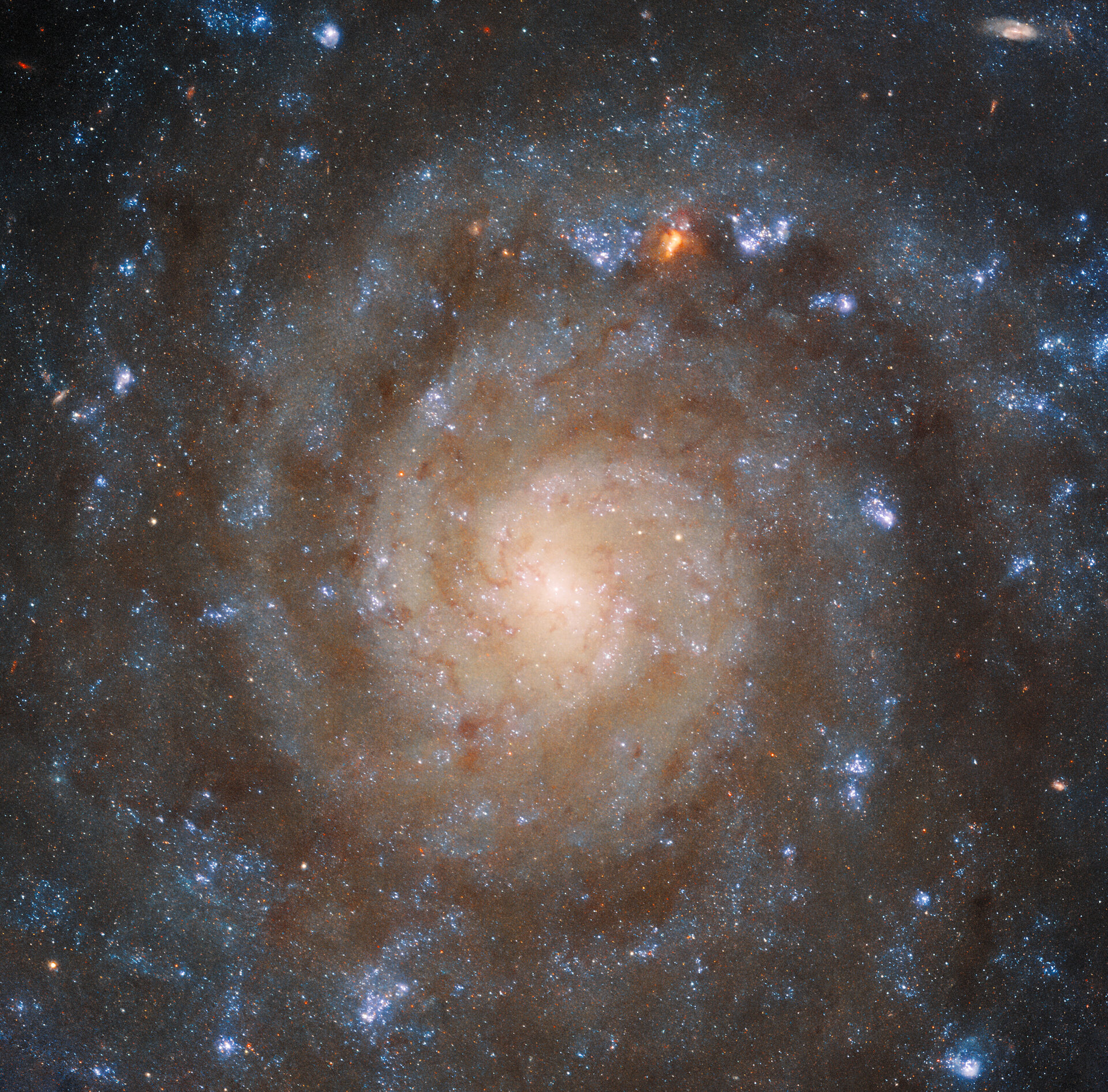The presented image was taken by the James Webb Space Telescope (JWST). It demonstrates the spiral galaxy IC 5332. This object is located at a distance of 29 million light-years from Earth in the direction of the constellation Sculptor.

Difficulties of taking pictures in the mid-infrared range
The image taken by JWST demonstrates unprecedented details of the internal structure of IC 5332, which are beyond the power of any other telescope. It was obtained using the MIRI instrument, capable of taking pictures in the mid-infrared range at wavelengths from 5 to 28 microns.
The mid-infrared range is extremely difficult to observe. Radiation at these wavelengths is almost completely absorbed by the Earth’s atmosphere. Putting a telescope into space is not a panacea in itself, because the heat it emits will simply “make noise” the entire channel. The only way out is to install an active cooling system capable of cooling the instrument sensors to a temperature close to absolute zero.
This is the system installed on JWST. It cools MIRI to a record temperature of -266 °C, allowing it to conduct observations.
James Webb vs Hubble
The JWST image of the galaxy IC 5332 demonstrates some of the possibilities of shooting in the mid-infrared range. For a more visual demonstration, it should be compared with the image taken by the Hubble Space Telescope in the visible and ultraviolet range.


In the Hubble photo, you can see a lot of dark areas in the galactic disk. They consist of dust. It absorbs visible light, which is why dusty areas look dark. At the same time, the dust transmits infrared radiation. Therefore, the dust areas in the JWST image are not dark at all. At the same time, we also see a lot of complex intertwining structures that are invisible in the Hubble photo, which complement the spiral arms of IC 5332.
You can notice that the two images depict different stars. This can be explained by the fact that some of them glow brighter in the ultraviolet and visible, and others in the infrared range. Thus, the photos of the two telescopes complement each other in an amazing way, allowing astronomers to learn more about the structure and stellar population of IC 5332.
Earlier we talked about how JWST photographed the rings of Neptune.
According to https://www.esa.int
Follow us on Twitter to get the most interesting space news in time
https://twitter.com/ust_magazine

